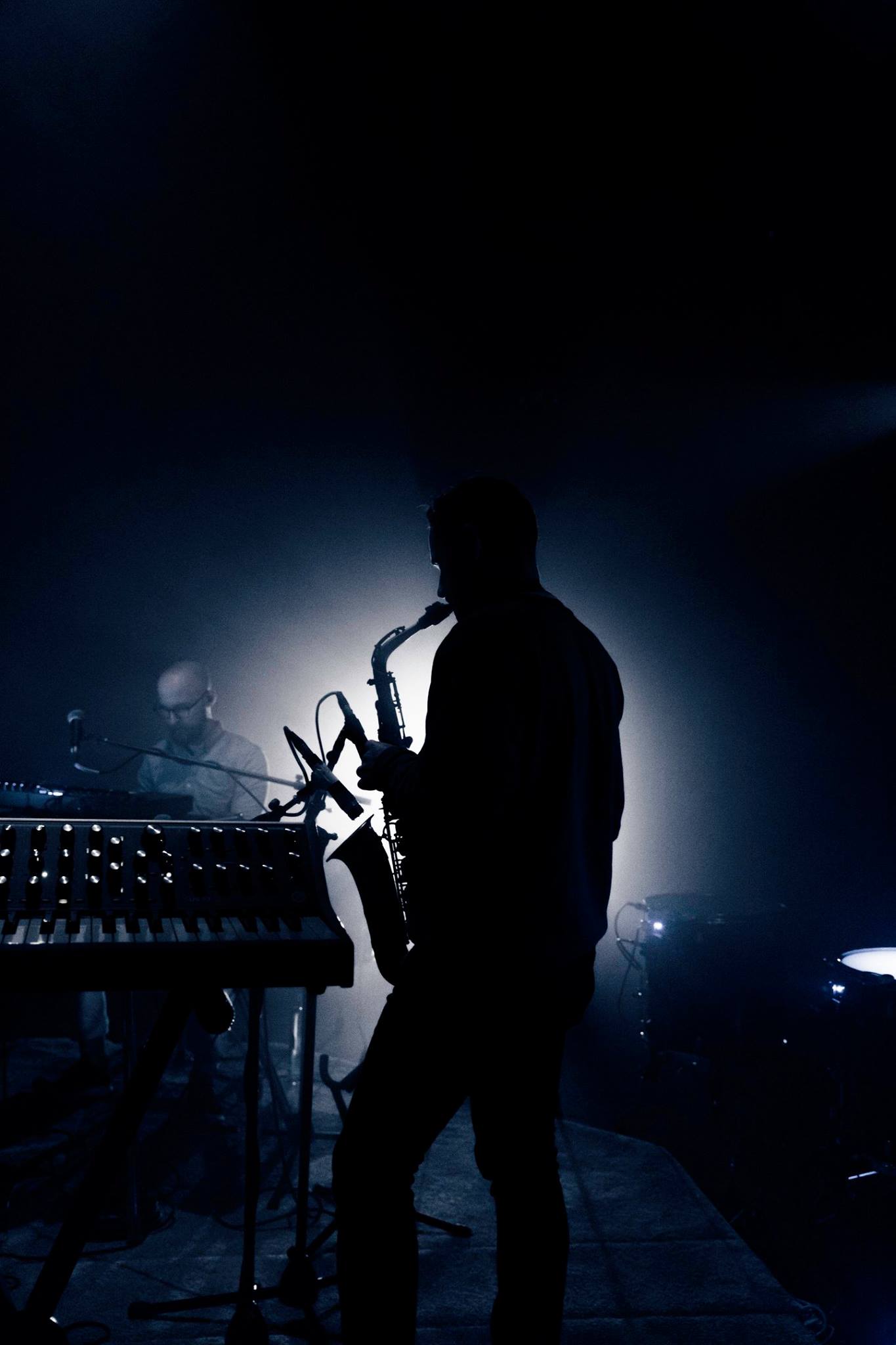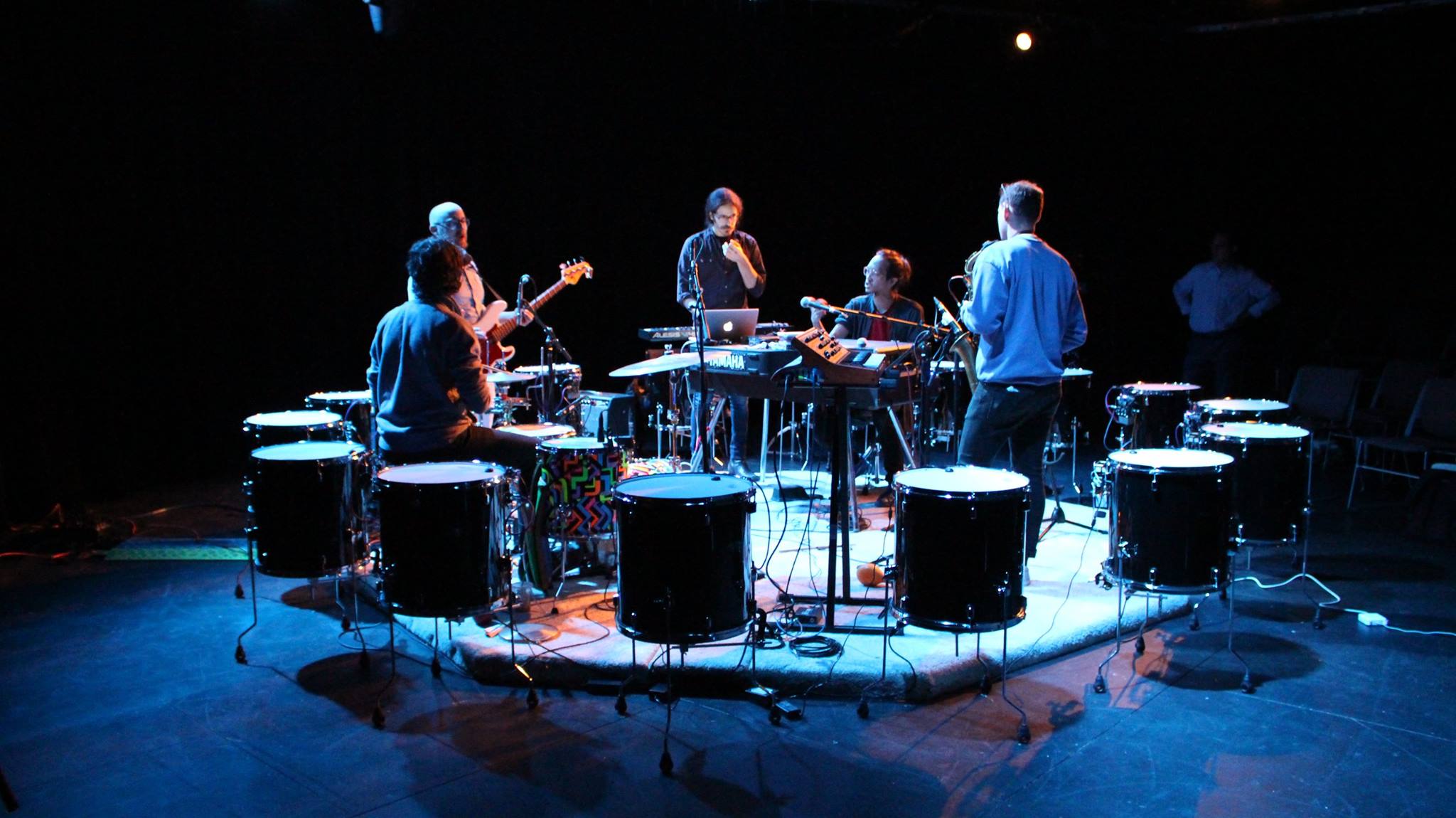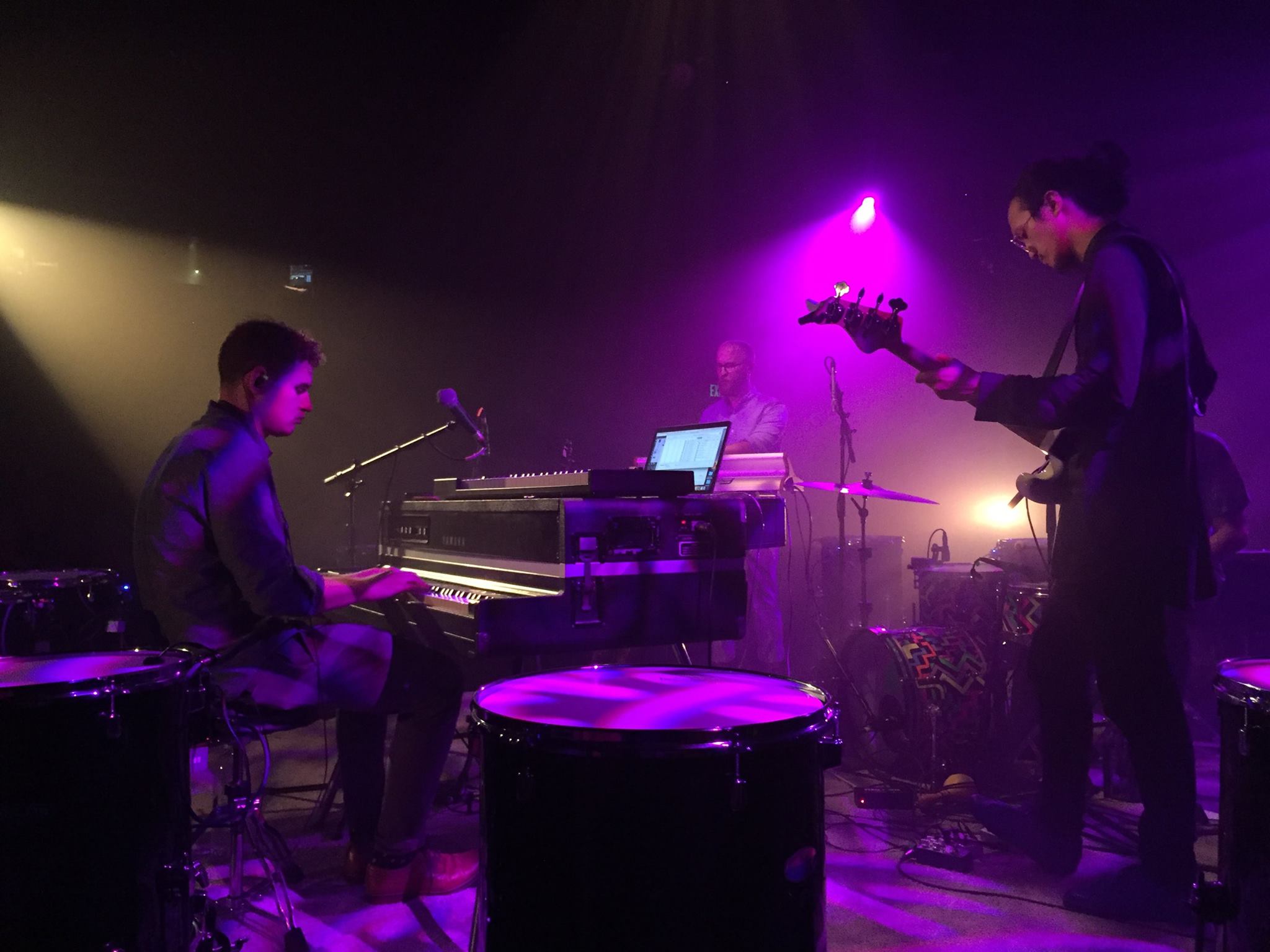
Crowded into the Black Box Theater June 17, more than 140 people witnessed the instrumental debut of a new, magnetic instrument called Drumhenge, invented over the last year at Drexel University’s ExCITe Center.
“This project is the collaboration between an engineer and an artist,” Jeff Gregorio, co-creator of Drumhenge and a Ph.D. candidate at Drexel’s Music and Entertainment Technology laboratory, said. “At every step. From concept to implementation.”
Gregorio conceived of Drumhenge in collaboration with Peter English, a musician and film director who joined the ExCITe Center as its first Artist in Residency in 2016.
Funded by the John S. and James L. Knight Foundation’s arts program, Drumhenge consists of 16 drums arranged in a circle, rigged with an electromagnetic mechanism that induces vibrations, combining music and technology.
“We wanted a combination of different perspectives to produce outcomes that we might not have produced if it had been just an engineer working on the project,” Gregorio said.
Drumhenge operates in two ways: harmonizing with notes played by instruments around it and synchronizing its component drums — wireless communication between the individual toms allows a strike on one drum to trigger a sequence of sounds around the circle.

When struck, typical drums create two distinct noises — the initial striking noise and the strike’s reverberations, echoing throughout the body of the drum. English and Gregorio created a way to initiate the drum sound without an acute strike by positioning magnets finely controlled by electricity near the drumhead and gluing steel foil to the drumhead itself. The magnets produce noise within the drum by turning on and off, rapidly attracting and repelling the steel foil, and consequently the drumhead, to create a vibration that echoes through the drum’s body.
On drums, saxophone and bass, three local musicians performed onstage alongside English, who played the drums with a keyboard when Gregorio was not controlling them from his laptop. As each drum emitted a sound, it lit up in color using LED lights beneath the drums’ heads. Colorful lighting for the performance was offset by theatrical smoke, creating an immersive experience.
The band played several original compositions for the audience, written to showcase Drumhenge’s capabilities, as well as one cover — The Working Hour by Tears for Fears — for the hour-long show.
Preceding the performance, audience members were treated to a tour of the instrument. Split into groups of 25, audience members were given a chance to play Drumhenge and see its wireless communication controls in action as English and Gregorio explained the musical theory and technology behind it.

“The purpose of the introduction was to give the audience an idea of what they were looking at since the average person isn’t probably familiar with augmented acoustic instruments,” Gregorio said. “Otherwise it could just kinda look like these weird sounds are coming from somewhere as the drums are lighting up.”
Gregorio said that the Drumhenge team is currently looking at doing a performance in New York in the fall and also considering performing at festivals that have a musical technology component.
“We would definitely like to continue the project and continue expanding on the tech, especially the ensemble communication aspect of it,” Gregorio said.


